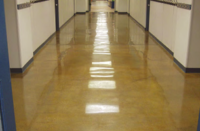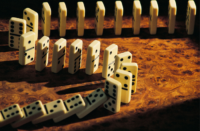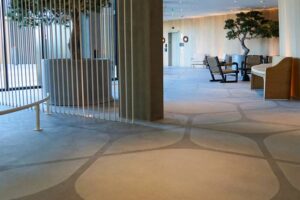 I received a call asking if I’d do a concrete patio, so I set up an appointment and went to meet the client at his home in Santa Cruz, Calif.
I received a call asking if I’d do a concrete patio, so I set up an appointment and went to meet the client at his home in Santa Cruz, Calif.
His home borders a greenbelt on the back of the yacht harbor. While I was there, I heard all the waterfowl and felt how primitive the sight of the greenbelt was. I thought it must have looked the same for thousands of years.
That night I had an idea. I looked up “cave drawings” on the Internet, and found a cave in France with the most beautiful cave art done 20,000 years ago. I printed several of the drawings and made a 1⁄4″ scale of the patio, which I presented to the owner the next day.
He loved the concept, asking, “You can do this on concrete?”
I joked: “Well, I am a concrete contractor and we haven’t evolved all that much from the caveman… and I do have a better stain.”
I went to work laying out a 2-foot square grid on the concrete, using the 1⁄4″ plan I had made.
The grid is one of the oldest methods known for copying artwork. I can copy whatever I want on the concrete. I can reproduce any size, shape, or pattern. The more intricate the pattern, the closer I make the grid.
I first draw lines on my plan, using the 1⁄4″-per-foot scale. I like to use 1⁄4″ because most of the buildings’ plans are done to 1⁄4 scale.
 I then transfer the lines to the concrete and connect the dots.
I then transfer the lines to the concrete and connect the dots.
When working with a set of building plans, I use a sheet of velum paper to copy the rooms I intend to stain. I then design and color each room. You can find marker pens at any art supply store that will give you the feel of stain.
I find this very helpful in presenting the design. Most people feel more comfortable if you show them what you have in mind. It’s so much easier to change the design on paper …
If you’re just starting out in the biz, have fun with it. Trust your passion and inspiration. Try to always be clear with your customer, and remember one thing … we all see color in different shades.















